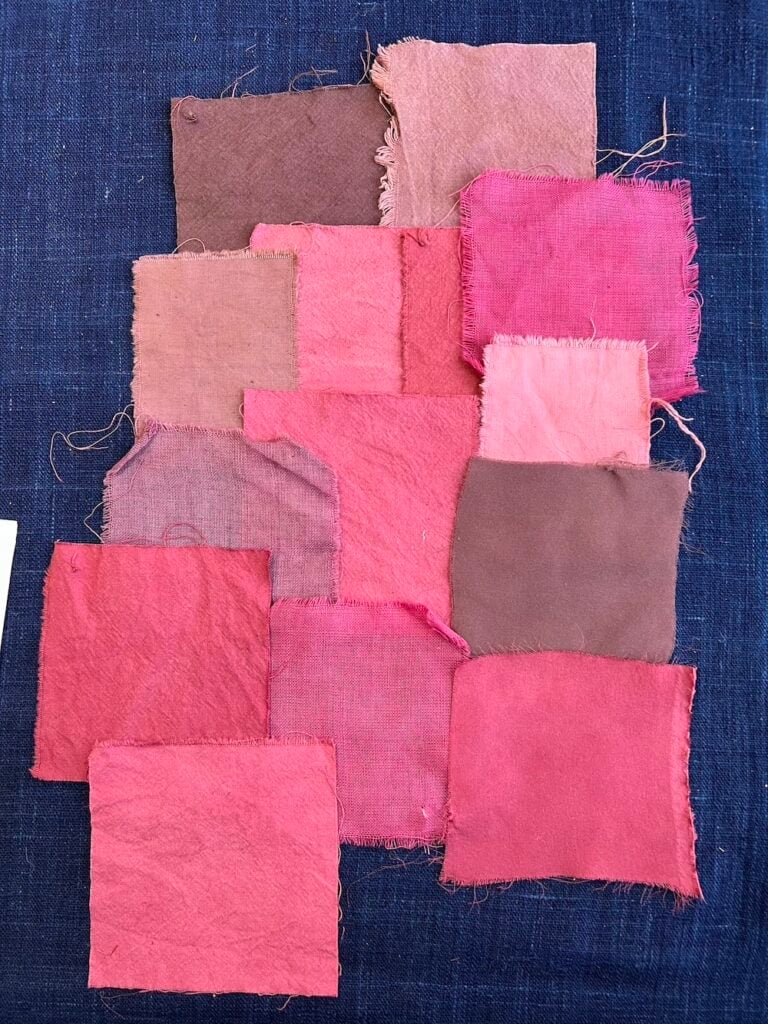
We get mordant questions all the time at Botanical Colors so why not create Mordant Monday??? Got mordanting questions? Email [email protected]
I recently used Logwood and cochineal on old cotton sheets as blankets to put over watercolor paper when eco printing books. The cotton blankets came out so amazing I decided to sew them together and make a kimono. I had no intention of making a garment or I would have taken more pre-care with the fabric. Since these were very old sheets, I didn’t scour as I’ve laundered them for literally years. I did not mordant either.
Anyway, here’s my question? Now that I am in love with this kimono, what would be the best way to post mordant the fabric to try and hold the color in? I’ve heat set with an iron … but that’s all. I literally sewed the fabric together without even washing it after printing. Stop laughing … it only smelled funky for a day or so (hahahaha).
As an FYI, the leaves were dipped in Fe and PAS. 140# cold pressed watercolor paper was soaked in sodium acetate and PAS. Some prints were submerged in the turkey roaster and cooked for a few hours at 200°; however, most of the prints were done in the heat press at 305° with a 6 minute timer. The prints came out spectacular on both fabric and paper; the books were very well received, and the kimono with matching habotai silk scarf has gotten lots of compliments.
I’d appreciate any advice you can offer on post-mordanting the cotton fabric.
KATHY ANSWERED: That sounds like a lot of fun and discovery. If you are able to do some experiments on fabric scraps you can then find a solution.
Basically, the answer is that you can soak your garment in aluminum acetate to mordant the color to the cotton sheet fabric, but before you do this try an experiment. My concern is that the non-mordanted areas will bleed and migrate and really change the look of your piece. So before you mordant, do this experiment.
Take a fabric scrap with the eco print on it and soak it in a solution of 8% aluminum acetate (8 grams in 100 ml of warm water). Soak for 2 hours. Observe for the following condition
- Fabric takes the mordant and does not bleed.
If the garment does not bleed, then you should be able to safely submerge the fabric in a mordant bath to increase lightfastness. Make a solution of 8% aluminum acetate on the wof of the garment and soak for at least 2 hours. Remove without wringing and let the excess mordant drip (hang outside or let drip into a tub or bucket).
Let the garment air dry (I would let it drip dry on a hanger or a clothesline out of direct sunlight).
If the test fabric releases the dye and bleeds heavily, then that means you probably can’t post-mordant and that you should enjoy the garment as long as it lasts without washing.
